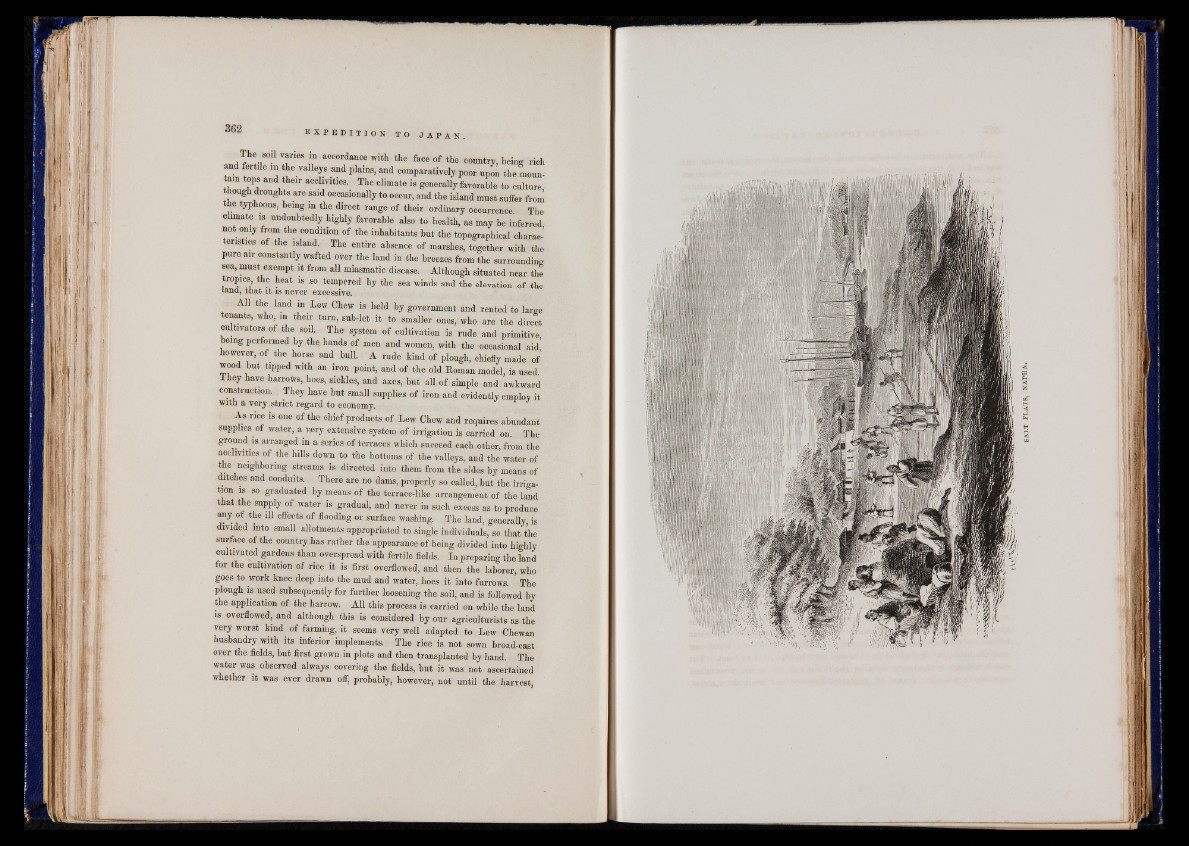
. ,n / f n r eS n aCOOrdance with the faoe of the country, being rich
and fertile m the valleys and plains, and comparatively poor upon the mountain
tops and their acclivities. The climate is generally favorable to culture,
though droughts are said occasionally to occur, and the island must suffer from
the typhoons, being in the direct range of their ordinary occurrence. The
climate is undoubtedly highly favorable also to health, as may be inferred
not only from the condition of the inhabitants but the topographical characteristics
of the island. The entire absence of marshes, together with the
pure air constantly wafted over the land in the breezes from the surrounding
sea, must exempt it from all miasmatic disease. Although situated near the
tropics the heat is so tempered by the sea winds and the elevation of the
land, that it is never excessive.
All the land m Lew Chew is held by government and rented to large
tenants, who m their turn, sub-let it to smaller ones, who are the direct
cultivators of the sod. The system of cultivation is rude and primitive
being performed by the hands of men and women, with the occasional aid’
however, of the horse and bull. A rude kind of plough, chiefly made of
wood but tipped with an iron point, and of the old Roman model, is used
I hey have harrows, hoes, sickles, and axes, but all of simple and awkward
construction. They have but small supplies of iron and evidently emplov it
with a very strict regard to economy.
As rice is one of the chief products of Lew Chew and requires abundant
supplies of water, a very extensive system of irrigation is carried on. The
ground is arranged in a series of terraces which suceeed each other, from the
acclivities of the hills down to the bottoms of the valleys, and the water of
the neighboring streams is directed into them from the sides by means of
ditches and conduits. There are no dams, properly so called, but the irrigation
is so graduated by means of the terrace-like arrangement of the land
that the supply of water is gradual, and never in such excess as to produce
any of the ill effects of flooding or surface washing. The land, generally, is
divided into small allotments appropriated to single individuals, so that the
surface of the country has rather the appearance of being divided into highly
cultivated gardens than overspread with fertile fields. In preparing the land
for the cultivation of rice it is first overflowed, and then the laborer, who
goes to work knee deep into the mud and water, hoes it into furrows. ’ The
plough is used subsequently for further loosening the soil, and is followed by
the application of the harrow. All this process is carried on while the land
is overflowed, and although this is considered by our agriculturists as the
very worst kind of farming, it seems very well adapted to Lew Chewan
husbandry with its inferior implements. The rice is not sown broad-cast
over the fields, but first grown in plots and then transplanted by hand. The
water was observed always covering the fields, but it was not ascertained
whether it was ever drawn off, probably, however, not until the harvest,